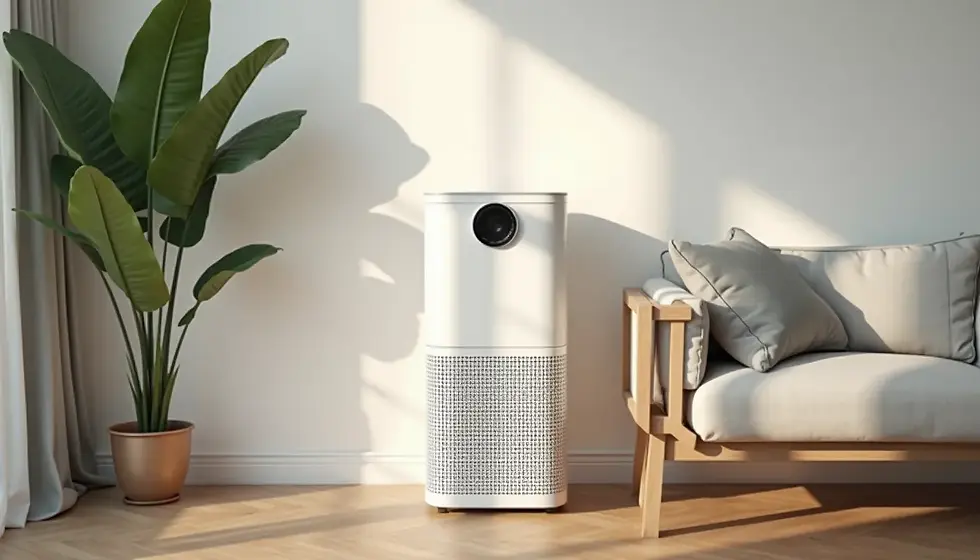How to Pack Furniture for Climate-Controlled Storage: The Right Way to Protect Your Belongings
- Mei-Lin Arora

- Sep 4
- 3 min read
Updated: Sep 7
If you’re planning a move or downsizing, a storage unit can save your sanity. But knowing how to pack furniture for climate-controlled storage is more than just tossing a couch inside. Even with regulated temperature and humidity, you need a strategy to avoid scratches, warping, or mildew. 🪑
Here’s the step-by-step expert guide to packing furniture safely so it comes out of storage looking just as good as when it went in.
Why climate-controlled storage matters
Unlike standard storage units, climate-controlled facilities keep temperature and humidity in balance. That’s crucial for wood, leather, and upholstered furniture that can swell, crack, or grow mold in extreme conditions. According to the Self Storage Association, climate control protects sensitive household goods from environmental swings (Self Storage Association).
Climate-controlled storage doesn’t eliminate the need for proper packing—it just gives your furniture a fighting chance against time and moisture.

Step-by-step: how to pack furniture for climate-controlled storage
1. Clean and dry everything first
Dust, food crumbs, or moisture left on furniture can attract pests or lead to mildew. Wipe wood with a gentle cleaner, vacuum upholstery, and let everything dry fully before packing.
2. Disassemble larger items
Take apart beds, tables, and shelving where possible. Remove legs, glass panels, and hardware. Store screws and bolts in labeled bags taped to the furniture piece. The American Moving & Storage Association notes that disassembly reduces damage risk and makes loading easier (Moving.org).
3. Wrap furniture correctly
Wood and metal pieces: Use moving blankets or padded covers to prevent scratches. Avoid plastic wrap directly on wood—it can trap moisture.
Upholstered items: Slipcovers or breathable fabric sheets protect against dust while letting the material breathe.
Mattresses: Use a breathable mattress bag specifically designed for storage.
4. Elevate off the floor
Even in climate-controlled units, unexpected leaks can happen. Place pallets or blocks under heavy items like sofas or dressers to keep them dry and allow airflow.
5. Label strategically
Mark fragile pieces, indicate which parts belong together, and number items so you can track them in your inventory.
A smart labeling system saves hours on moving day and prevents the dreaded “mystery hardware bag” problem.
Pro tips for maximizing protection
Leave airflow space: Don’t push furniture directly against walls; allow circulation to prevent moisture pockets.
Stack cautiously: Heavy items at the bottom, light ones on top, but avoid stacking upholstered furniture that can dent.
Cover floors: A simple tarp or sheet beneath items adds an extra barrier against condensation.
Check insurance: Confirm your homeowner’s or renter’s policy covers items in storage. The Insurance Information Institute recommends creating a photo inventory for proof of condition (III.org).
Even climate-controlled storage is not magic. The way you pack and protect your items is what truly determines whether they survive storage intact.

FAQ
How to pack furniture for climate-controlled storage?
Clean, disassemble, wrap with breathable covers, elevate from the floor, and allow airflow around items.
Do I still need to wrap furniture in climate-controlled storage?
Yes—padding prevents scratches, dust buildup, and hidden moisture pockets.
Can I use plastic wrap on wood?
Avoid direct plastic wrap on wood; it traps moisture and can cause warping or mildew.
What about storing leather furniture?
Condition it before storage, then cover with breathable cloth to prevent cracks.
Is climate-controlled storage worth the cost?
Absolutely for wood, leather, and upholstered furniture—temperature swings can permanently damage them in standard storage.
Final verdict: how to pack furniture for climate-controlled storage
Packing furniture isn’t about speed—it’s about preservation. By cleaning thoroughly, disassembling large items, wrapping with breathable materials, and elevating off the floor, you’ll ensure your furniture stays safe for months (or years) in storage. Climate-controlled storage is a smart investment, but how you pack makes all the difference. 📦



Comments